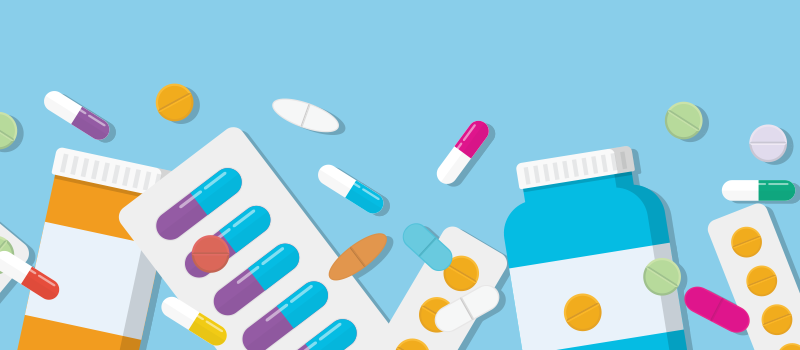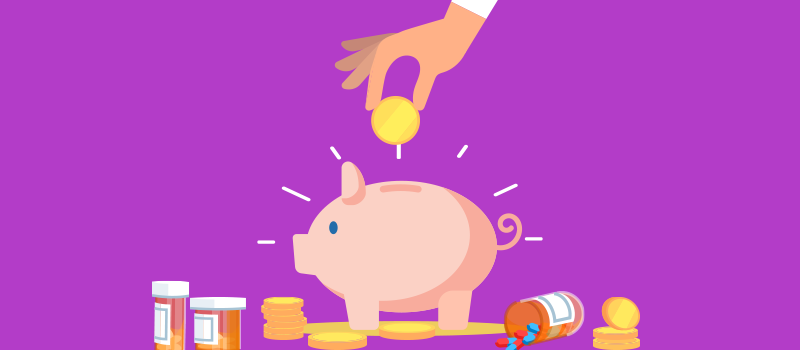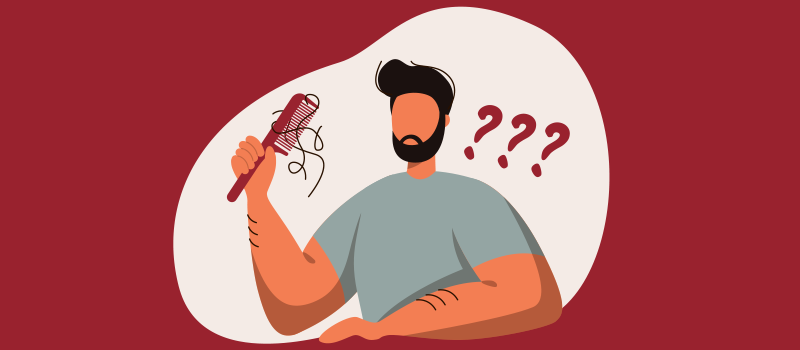What’s the Buzz
The Bee Healthy Blog
What is Chlorhexidine Mouthwash Used For?

Chlorhexidine mouthwash is an antiseptic oral rinse that kills bacteria in your mouth and helps to maintain a healthy mouth. However, using a prescription rinse such as chlorhexidine gluconate also carries some risks. Please continue reading to learn more about what chlorhexidine mouthwashes are used for and how to use them correctly.
What is chlorhexidine gluconate?
Chlorhexidine gluconate (brand names: Peridex, PerioGard, Paroex) is an oral rinse that has powerful antibacterial properties. This broad-spectrum antimicrobial agent is effective against Gram-positive, Gram-negative bacteria, and fungi in your mouth that cause gingival inflammation and gum disease. In other words, chlorhexidine reduces the amount of bacteria in your mouth that can cause gingivitis.
What is chlorhexidine mouthwash used for?
People use chlorhexidine mouthwash to treat oral diseases and mouth infections such as gingivitis that occurs due to dental plaque. Clinical symptoms of plaque-induced gingivitis (inflammation of the gum soft tissues) include redness, swelling, and gum bleeding. Gingivitis is caused by bacterial growth in dental plaque (the sticky bacteria-filled coating that forms on tooth surfaces). Without treatment, dental plaque can lead to sore and bleeding gums, infection, and even tooth loss in severe cases.
Other uses of chlorhexidine mouthwash include treating dry sockets (a complication of tooth extraction), recurrent mouth ulcers, denture-related stomatitis (mouth inflammation), and preventing the aerosolization of bacteria (spread of bacteria in airborne droplets). Chlorhexidine mouthwash may also be prescribed prophylactically (as prevention) after dental surgery.
Do dentists recommend using chlorhexidine oral rinse?
Dentists recommend chlorhexidine antiseptic mouthwash for mild gum disease treatment, along with good oral hygiene consisting of tooth brushing twice a day with fluoridated toothpaste and interdental cleaning daily with dental floss or interdental brushes. There is insufficient evidence to say whether chlorhexidine mouthwashes have beneficial effects in people with moderate to severe gum disease (periodontal disease).
Generally speaking, dental professionals recommend using chlorhexidine mouthwash for 30 days to manage dental plaque. Chlorhexidine mouthwashes are not recommended for long-term or routine use to prevent gum disease or maintain dental health. Using chlorhexidine long-term has been found to cause tooth staining.
The duration of treatment of chlorhexidine is not clearly defined. This germicidal oral rinse is approved to be used alone or with other medications to treat the symptoms of gingivitis between dental visits. Clinical trials looking into the role of chlorhexidine in gingivitis treatment vary in length, from 72 hours to 6 months.
Are chlorhexidine mouthwashes effective?
A systematic review suggests that chlorhexidine use may be effective for mild gum disease along with other treatments such as regular brushing, a teeth deep cleaning procedure, and dental treatments like root planing. Further research is needed to investigate the role of chlorhexidine products in treating gingivitis that is moderate to severe.
In a 6-month, double-blind, placebo-controlled clinical trial, chlorhexidine 0.12% oral rinse has shown a significant reduction in gingivitis, plaque accumulation, and gum bleeding compared to placebo. According to DailyMed, microbiological sampling of plaque has shown a 54-97% reduction of certain assayed bacteria with chlorhexidine gluconate oral rinse through six months of use.
What should I watch out for while using chlorhexidine?
The use of chlorhexidine mouthwash in a 6-month clinical study did not cause any significant bacterial resistance, overgrowth of opportunistic microorganisms, or other changes in the oral microflora. However, three months after discontinuing chlorhexidine mouthwash, the number of bacteria in dental plaque returns to baseline levels. However, this germicidal oral rinse can cause side effects, such as:
-
Teeth staining. However, the good news is that a dental cleaning can remove these stains. Your dentist may not recommend chlorhexidine if you have certain dental fillings.
-
Change in taste. In rare cases, the taste disturbances can remain even after chlorhexidine treatment is complete.
-
Increased tartar formation.
How to use chlorhexidine antibacterial mouthwash?
You should rinse your mouth with 15 milliliters (mL) of chlorhexidine mouthwash twice a day after brushing your teeth or as directed by your dental professional. Use the fill line on the cap to measure the correct dose. Do not dilute the oral rinse with water or other liquids. Swish it around in your mouth for 30 seconds, and then spit it out. Do not swallow the chlorhexidine mouthwash. Wait at least 30 minutes after rinsing your mouth with chlorhexidine gluconate before eating or drinking anything or rinsing your mouth with water. This is to allow the chlorhexidine mouthwash to work.
How does chlorhexidine work?
Chlorhexidine is an antibacterial mouthwash. It reduces the number of bacteria in your mouth that cause gingivitis. Keep in mind that chlorhexidine does not prevent the formation of plaque or tartar. While using chlorhexidine, practice good oral hygiene with brushing and flossing for plaque and tartar control.
You can use it to treat gingivitis as directed by your dentist. However, do not use chlorhexidine mouthwashes routinely. Long-term use can lead to teeth staining and build-up of tartar (supragingival calculus formation or chalky deposits) on your teeth.
What are the side effects of chlorhexidine gluconate?
Common side effects of chlorhexidine gluconate mouthwash include a bitter aftertaste in the mouth, a change in taste perception of certain foods, and staining of your teeth, tooth fillings, dentures, etc. (dark yellow or brown stains). Do not rinse your mouth with water after using chlorhexidine mouthwash, as this can make the bitterness worse and the oral rinse ineffective. Changes in taste usually last for a few hours after using the mouthwash and return to normal after you stop using chlorhexidine products. Other side effects include an increase in tartar with long-term use.
Call your doctor if you develop sore throat, mouth irritation, tongue tip irritation, or swollen glands in the neck while using chlorhexidine mouthwash.
In rare cases, chlorhexidine gluconate can cause severe allergic reactions. Call your doctor immediately or seek emergency medical care if you develop skin rash, hives, itching, swelling, or difficulty breathing or swallowing after using chlorhexidine.
When should you not use chlorhexidine?
You should not use chlorhexidine mouthwash if you have had an allergic reaction in the past to chlorhexidine gluconate or any of the active or inactive ingredients in chlorhexidine mouthwashes. Children, pregnant women, and breast feeding women should check with their healthcare professional before using chlorhexidine.
If a child weighing less than 10 kg (22 pounds) swallows more than 4 ounces of the oral rinse, get emergency medical help without delay. Also, seek emergency medical attention if a person of any age swallows the dental rise and has symptoms of alcohol intoxication, such as drowsiness, slurred speech, or movement problems.
What’s the takeaway?
Combining daily flossing and tooth brushing with using chlorhexidine mouthwashes as prescribed alleviates the symptoms of gingivitis while reducing dental plaque build-up and is more effective than tooth brushing alone. However, using chlorhexidine mouthwash for more than four weeks can lead to tooth staining (which may require a professional teeth deep cleaning procedure) and build-up of tartar (you will need to see a dentist for tartar removal). Therefore, you should not use chlorhexidine mouthwash routinely to maintain oral health. Only use chlorhexidine oral rinse exactly as prescribed by your dental professional.
References:
-
https://dailymed.nlm.nih.gov/dailymed/drugInfo.cfm?setid=b445d769-a9e3-f72a-fbab-d485457996d0
-
https://www.mayoclinic.org/drugs-supplements/chlorhexidine-oral-route/side-effects/drg-20068551?p=1#:
-
Grossman E, Reiter G, Sturzenberger OP, et al: Six-month study of the effects of a chlorhexidine mouthrinse on gingivitis in adults. J Periodontal Res 1986; 21(suppl):33-43.
-
Dona BL, Grundemann LJ, Steinfort J, et al: The inhibitory effect of combining chlorhexidine and hydrogen peroxide on 3-day plaque accumulation. J Clin Periodontol 1998; 25:879-883.
-
https://dailymed.nlm.nih.gov/dailymed/lookup.cfm?setid=4a3a4cfe-88e2-0a10-e054-00144ff88e88












SOCIAL